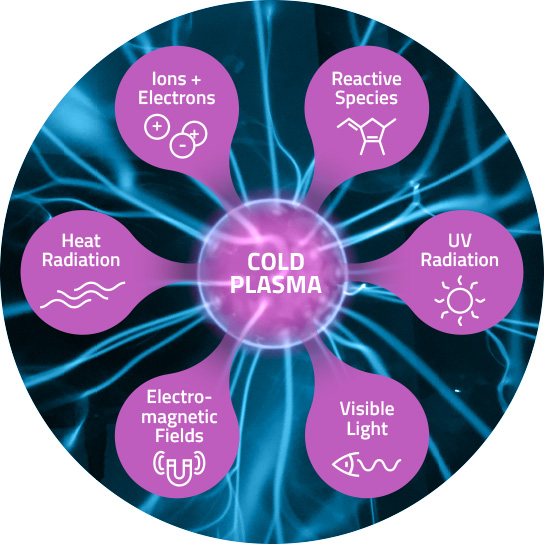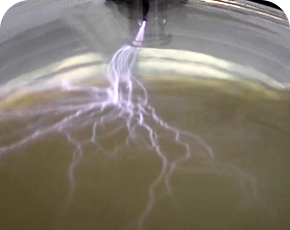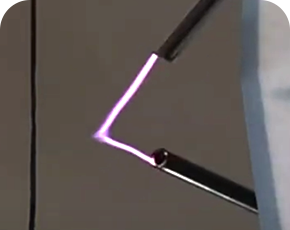World leaders in medical
cold plasma technology
Cold plasma technology has opened a new frontier in medicine
What is cold plasma?
Plasma is the fourth state of matter after solids, liquids, and gases. Examples of plasma in nature are the sun – a gigantic plasma ball – or lightning on Earth – temporary electrical discharge. Cold plasma is maintained at temperatures below 40°C, which unlike hot plasma enables it to be applied to living organisms.
Cold plasma is generated by applying energy to a gas, which makes the gas molecules or atoms lose their outer electrons and become ionized. It is comprised of a reactive mix of electrons, ions, excited atoms, and molecules – reactive species (e.g. O3, NO, NO2, etc.), UV radiation, and heat, with wide potential medical application.

Nova Plasma Medical Technology Advantages
Extensive
cold plasma
knowhow
Unique medical
plasma cocktail
Medical device
development
expertise
Proven
market
success
Affordable &
user-friendly
medical solutions

Plasma medicine applications
Extensive research has shown that the concentration and composition of cold plasma components can vary significantly for different plasma sources. It is this ability to modify the cold plasma for specific purposes that makes it possible to design a unique cold plasma technology for many different medical applications. Multiple studies show its use in the field of dentistry, implantology, dermatology, oncology, and as a treatment for antibiotic-resistant strains of bacteria.
Cold plasma in medicine has been shown to inactivate or reduce bacteria, fungi, viruses, spores and allergens, odor, and harmful molecules very efficiently. It has disinfection properties and can stimulate the growth and proliferation of endothelial cells, as well as activate regenerative processes in the skin. Research shows it can destroy cancer cells and enhance the hydrophilic properties in implants, improving implant integration with living bone (medically known as osseointegration).
Want to know more? Read the frequently asked questions about cold plasma.
See cold plasma in action

Comparing implant surfaces after cold plasma
Compare the hydrophilic properties of silicone implants following cold plasma treatment.

Surface activation by Cold Plasma
Cold Plasma makes hydrophobic surfaces super hydrophilic in just a few seconds.
